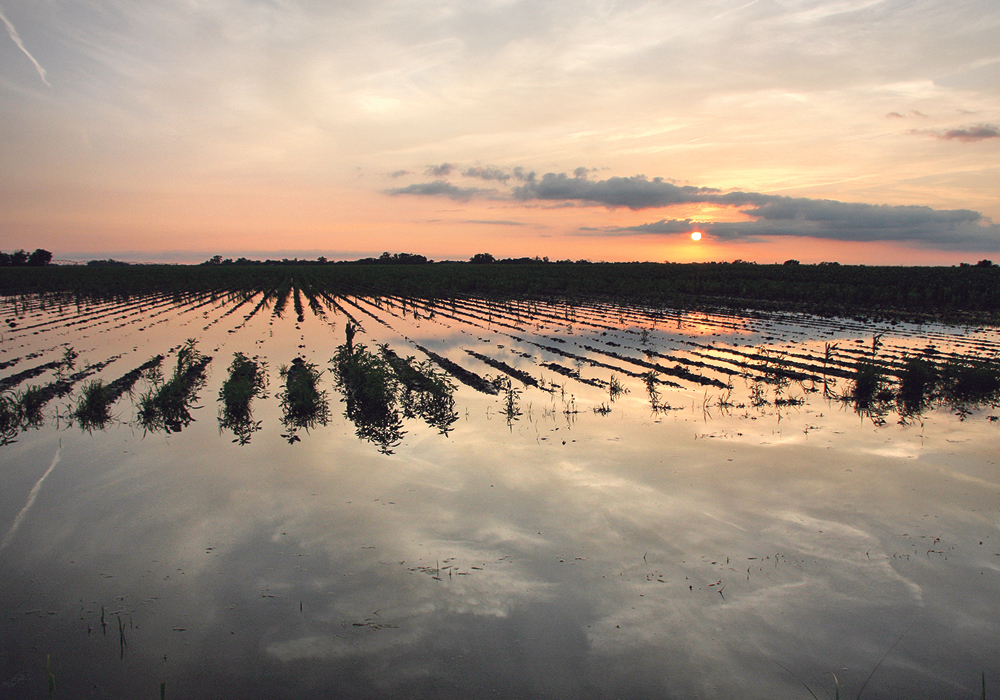A corn and soybean grower from northeastern Iowa had to change how he farms because of climate change.
“In my 45 years I’ve seen climate change,” Tim Burrack, vice-chair of the Global Farmer Network, said after his CropSphere presentation in Saskatoon last month.
“We used to go from a three-inch rain event being something that is large, to now whenever it rains it just seems that it rains four inches, six inches at a time. It isn’t just that you get one, you might get one a week, two in a week. I’ve seen it multiple times.”
Read Also

Farm groups ask feds for export sales reporting
The Agricultural Producers Association of Saskatchewan and SaskCrops asks the federal government to create an Export Sales Reporting program.
He said it doesn’t matter if one believes human activity causes climate change because the bottom line is weather patterns have shifted significantly in his lifetime.
The onslaught of major rain events on his farm forced Burrack to look for ways to prevent soil from washing off his fields.
“The erosion is getting so bad that I had to do something different. I just was not leaving the farm in a manner that I had acquired it, and I wasn’t happy anymore,” Burrack said.
“I started hearing about cover crops and we started experimenting with them because I do grow seed corn, that’s an early harvest, and we were looking for something to put back on the land to protect it from erosion.”
He said growers have to get over the mental hurdle of planting a crop they do not intend to harvest for a profit.
Burrack tried to broadcast the seed when he began seeding cover crops, but he struggled to get an adequate plant emergence.
He then found seeding disks for his planter that did a better job.
“Farmers in Indiana are way ahead of farmers in Iowa in this aspect,” he said.
“They’d already figured it out that if you could use your bean planter or your corn planter to plant your cover crops you could save a tool, you reduce seed by two-thirds, and you get a great cover and emergence,” Burrack said.
Another benefit from using his planter is he’s able to plant the new crop between the rows of the cover crop stand.
“You plant your new crop in a perfect seed bed. Those corn and soybeans go into a mellow soil protected from a heavy rain by that cover crop. And plus you’re holding the weeds back. If you let it get to a big size, you can save a pre-herbicide application,” Burrack said.
He tried oats and radishes for his cover crops but is now sticking to rye because he said it provides an impressive root mass that helps hold the soil together.
Burrack farmed for 40 years before using cover crops, and he said the practice has made him more profitable.
“So far it’s raising the bean yields, it’s reducing the tillage cost, it’s reducing my diesel fuel. The biggest thing that I stress, even though in my presentation I talk about two tons of soil loss savings, I really think it’s 20 tons because these big rains have just been devastating us,” Burrack said.
“Where we don’t have the cover crop on, it is just terrible erosion, and where we have the cover crop and we get the big rains or the spring thaw, the snow disappears and the water disappears where the cover crops are, and where they aren’t it just runs off.”
He said using cover crops doesn’t solve all of his farm’s problems, but they do reduce erosion. Growers would be wise to get ahead of erosion issues or regulators will be forced to get more involved in their business, he added.
“The goal is how can we reduce the nutrient runoff and improve the water quality,” he said.
“Well, this is my one small step on my farm to keep nutrients, to keep soil and keep cleaner water so that when it does leave the farm it is cleaner than it has traditionally been.”
















